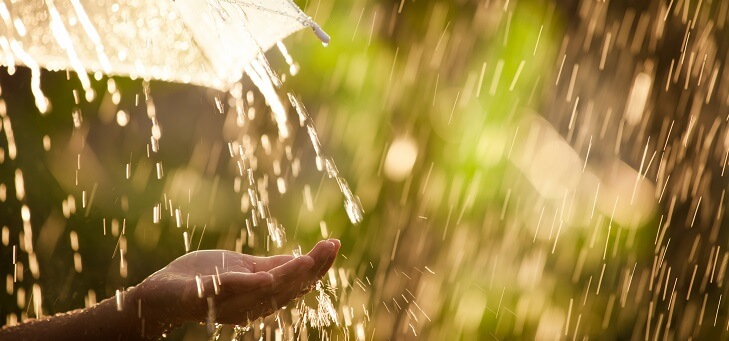Australia is likely to have to endure another wet summer after the Bureau of Meteorology (BOM) upgraded the likelihood of a La Nina event occurring.
You might need to rethink your summer holiday plans as the widespread rain and flooding seen in eastern Australia over the past two years is likely to continue for a third consecutive summer, the bureau warns.
It has upgraded its La Nina predictor to ‘alert’ status, meaning there is a 70 per cent likelihood of La Nina conditions developing towards the end of the year.
La Nina events generally increase the chances of above-average rainfall for eastern and northern Australia. Since records began in 1900, Australia has experienced 19 La Nina events, with 12 of them causing damaging floods in eastern states.
Read: Seven things to do when the bad weather is getting you down
The weather event is the result of variations in water temperature on different sides of the Pacific Ocean.
During La Nina, strong winds blow warmer water west towards Australia from the South American coast. As the warm water moves west, cold water from the deep sea rises to the surface.
It’s this mass shifting of heat from one part of the world to the other that drives the increased rainfall.
BOM meteorologist Hugh McDowell told the Sydney Morning Herald having three consecutive La Nina events was not common, and the last time it happened here was between 1998 and 2001.
Read: How to stay safe during extreme weather
“We are more confident a La Nina could develop,” he says.
“It is pretty rare [three consecutive La Nina events], it does seem to be roughly in a 20-year cycle, but we’re not sure if that is just chance or there is something more in that.”
Residents in northern NSW have endured three catastrophic flooding events in the last 12 months, while flooding in Queensland this year caused the deaths of 18 people.
The prospect of another summer of excessive rain and flooding is weighing heavily on people in these areas.
Read: New type of insurance pays out as soon as extreme weather hits
In a cruel twist, the fact these areas have been subject to recent floods also increase the likelihood that they will flood again. Saturated soil across these regions will be unable to effectively drain any rain that comes.
University of Melbourne climate science lecturer Dr Andrew King told The Guardian there was not enough long-term data to tell if the third La Nina event in as many years was being driven by climate change. However, he did concede that climate projections predicted events would become more frequent.
“Climate change is having big effects in terms of heatwaves and things like that, but in terms of rainfall variability and La Nina and El Nino, it is harder to see the climate change element at the moment,” he said.
“We need to see these things that occur every few years and we need to have long-term record observations to build a pattern and we don’t have that yet.”
Did you get flooding at your place last summer? Will you be doing anything differently this year? Let us know in the comments section below.
If you enjoy our content, don’t keep it to yourself. Share our free eNews with your friends and encourage them to sign up.


All good to relate to climate change…probably has had some effect. However Brisbane had 3 flood events in 1893 following a southern Pacific volcano. Maybe that is what is in place now? Perhaps we need to consult Ian Plimer as well as the climate change hypothesis promoters.